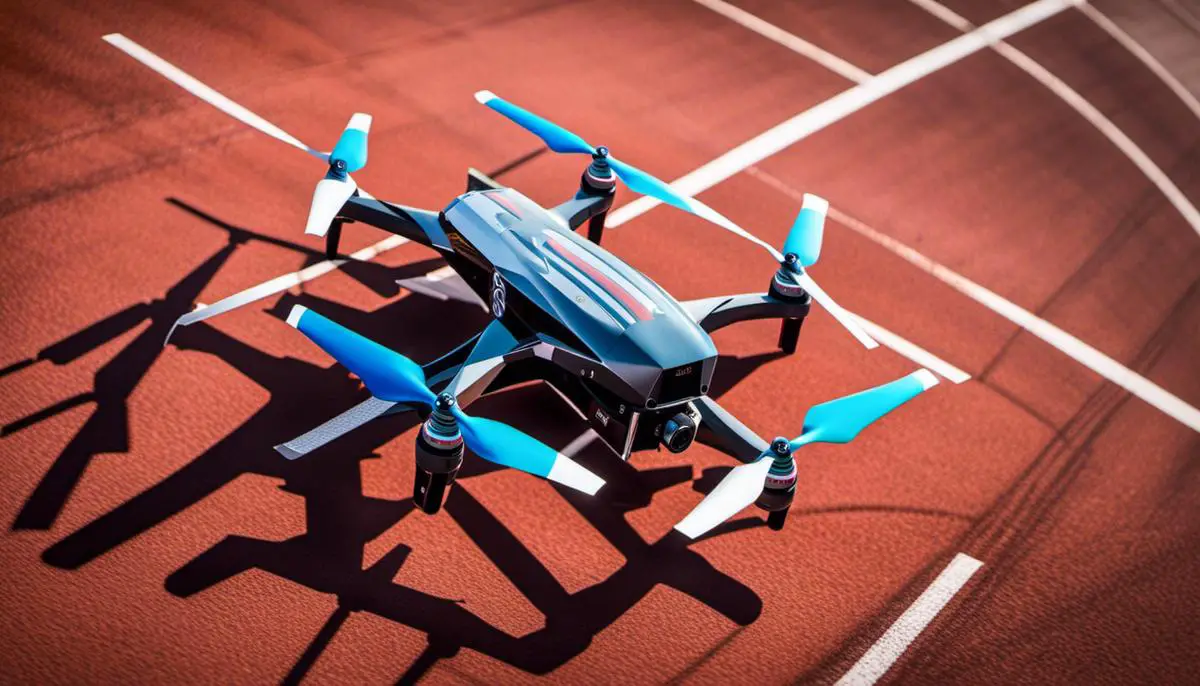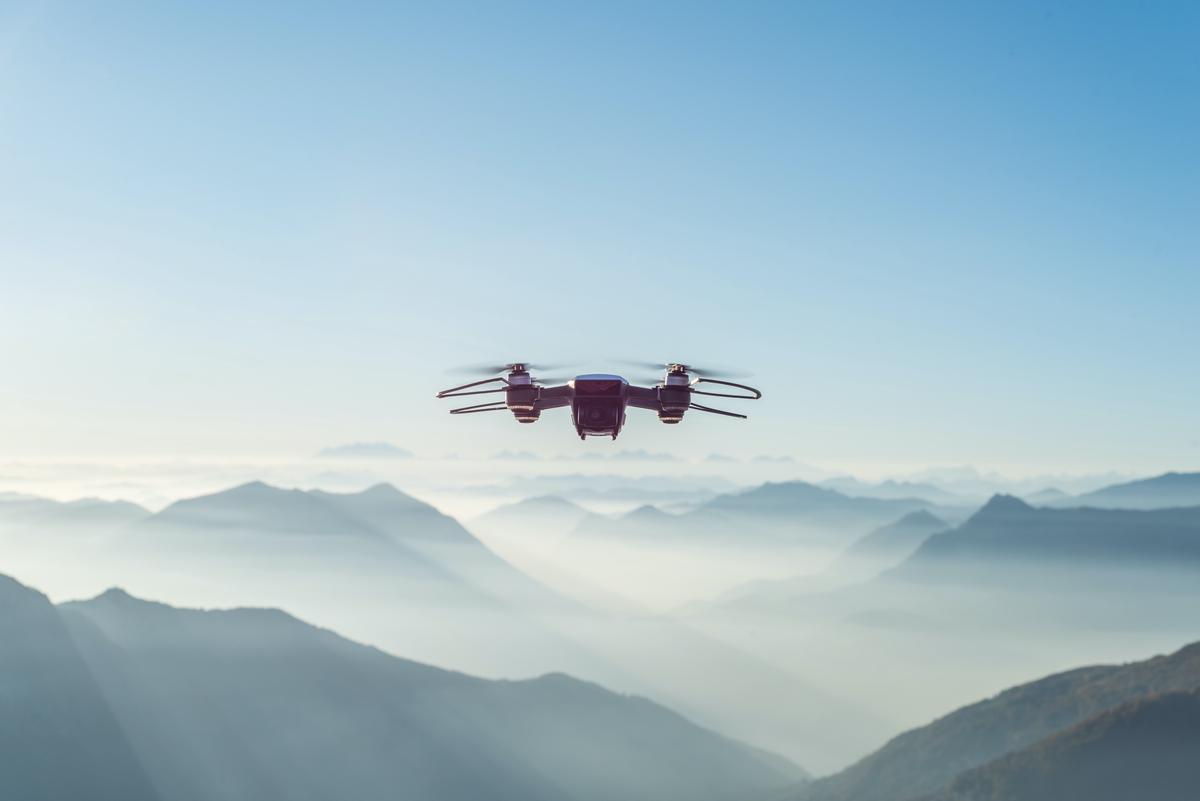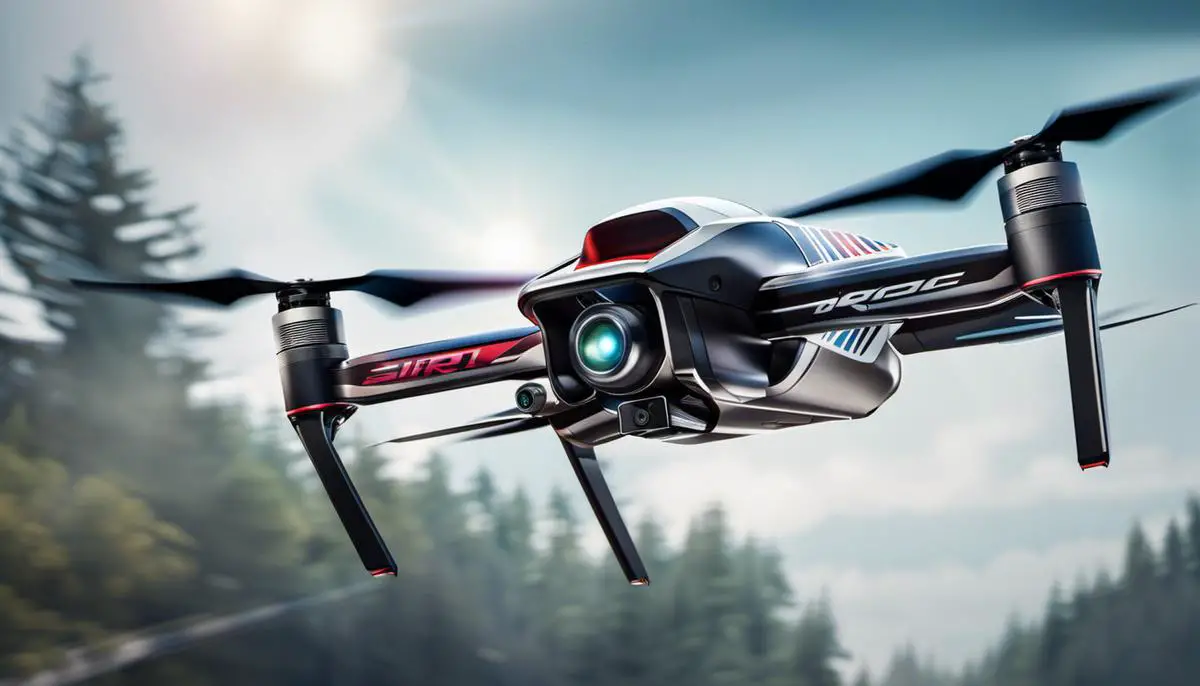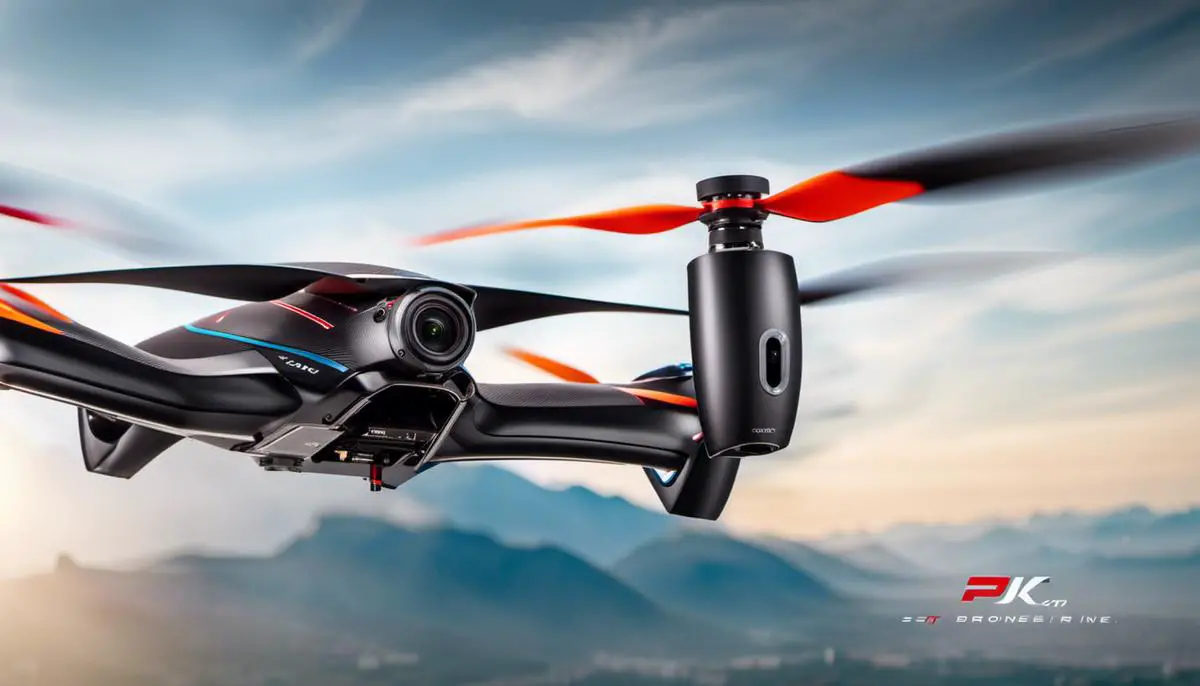Unveiling Race Drone Speeds: 7 Mind-Blowing Facts!

Unseen to the naked eye as they whiz by, drones have taken over the world of racing in recent years through sweeping innovations and technological advancements. These speed machines, known as race drones, have been engineered and refined to reach unimaginable velocities, outpacing some of the fastest flying objects we’re familiar with. The world of drone racing is thrilling and highly competitive, with the speed metrics changing as new technologies emerge. Delving into the intricacies of race drone mechanics, the record-breaking speed achievements, the vast array of elements that influence speed, and drawing comparisons with other airborne devices creates a comprehensive understanding of this rapidly evolving field.
Basics of Race Drone Mechanics
Basics of Race Drone Mechanics
When discussing race drones, it’s essential to understand the basic mechanics involved in their operation. Race drones, also known as FPV (First Person View) drones, are specifically designed for high-speed flight, often exceeding speeds of over 100 miles per hour. Several factors contribute to how fast a race drone can fly, including the efficiency of its motors, the power of its battery, its overall weight, and the design of its propellers.
Motor Efficiency and Battery Groundwork
One of the main components that determines a drone’s speed is its motor. Motors designed for race drones are hyper-efficient and work in concert with high-performance batteries. These batteries need to balance capacity, weight, and discharge ability to provide the high level of power needed for these intense flights. With modern advancements in lithium-polymer technology, drone batteries have become both lighter and more powerful.
Propeller Design
Another central aspect of drone speed is the design of its propellers. Propellers are primarily responsible for the thrust that accelerates the drone. They come in various shapes and sizes, and their design significantly influences the drone’s overall speed and agility. The perfect propeller will provide maximum lift with minimal air resistance, allowing the drone to cut through the air efficiently at high speeds.
Size and Weight Impact
Size and weight also play a crucial role in determining a drone’s speed. Generally, smaller and lighter drones tend to be faster because they experience less air resistance and are more agile. Many race drones are designed with minimalistic, aerodynamic frames to shed unnecessary weight and optimize speed.
Environmental Factors
The environment in which a race drone operates can also affect its speed. Factors such as temperature, humidity, and wind can impact the drone’s performance and speed capabilities. Drones can fly faster in cooler temperatures because cold air is denser than warm air. However, strong winds can slow down a drone or affect its stability.
Software Contributions
Lastly, the drone’s software also influences its speed. The program that controls the drone’s flight paths and maneuvers must be incredibly precise to make split-second adjustments while flying at top speeds. Advanced flight control systems can help optimize speed by making these adjustments more efficiently. Furthermore, the software can be tuned to prioritize speed over flight time or stability, pushing the drone to its maximum speed.
Let’s dive into the fascinating world of race drones. With promising advancements in technology and sophisticated design, these machines are redefining the limits of drone racing. These high-speed devices offer a thrilling spectacle, soaring through the skies at incredible velocities.

Photo by asoggetti on Unsplash
Record-Breaking Speed Achievements of Race Drones
Interpreting Racing Drone Speed: From Average to Astonishing
Drone speeds are subject to various factors, such as the drone’s design, weight, and the type of motors incorporated. Most racing drones, on average, zip through the air at about 80–100 miles per hour (mph). However, certain models are designed to outperform this range impressively. A notable example is the Racer3 from the Drone Racing League (DRL), which can hit around 90mph. On the higher end, the DRL’s RacerX defied all expectations by achieving an amazing speed of 163.5 mph in 2017, setting a well-deserved Guinness World Record.
The Significance of Weight and Design
The weight and design of a drone play a crucial role in enabling high-speed performance. Lighter drones tend to achieve higher speeds due to fewer gravitational forces acting on them. Similarly, the aerodynamic design of a drone significantly affects its speed. This includes factors such as the shape and size of the drone, the positioning and configuration of the propellers, and the choice of materials used for constructing the drone.
Powerful Motors and Speed Controllers
The type and power of the motors used also significantly influence the speed of racing drones. Brushless motors, particularly those with high RPM ratings, tend to offer faster drone speeds. How the power from these motors is managed also counts, which is where speed controllers come in. They ensure that the power sent to each motor is appropriately optimized for maximum speed.
Battery and Tuning Impact on Speed
The battery power and the tuning of the drone also affect the racing speed. A higher capacity battery doesn’t just provide longer flight times, but also boosts the drone’s performance. Drone tuning, on the other hand, involves adjusting the drone’s configurations and settings for optimal performance. It can require a lot of technical knowledge, but often results in impressive speed enhancements when done correctly.
Remarkable Achievements in Drone Racing Competitions
Many drone racing competitions have seen drones achieve astonishing speeds. For example, the DRL RacerX made headlines in 2017 with its impressive speed of 163.5 mph, setting a new world record at the time. Other competitions like the MultiGP Drone Racing League and the X-Class Drone Racing League also regularly feature drones with high-speed performances.
Future Speed Predictions for Racing Drones
Given the current advancements in drone technology, it’s expected that racing drones will only continue to get faster. Enhanced battery technology, improved aerodynamic designs, and increasingly efficient motors are all factors that could potentially push racing drone speeds even further. While it’s difficult to pinpoint exact numbers, some industry specialists predict that we might be seeing racing drones easily surpassing 200 mph within the next few years.
The Evolution of Drone Speeds: How Technology Paves the Way
Creating faster racing drones hinges greatly on the application of cutting-edge technology. Areas such as battery performance, motor efficiency, drone fine-tuning, and aerodynamic design are under constant betterment. Every passing year ushers in enhancements in these areas, resulting in race drones that can fly at unprecedented speeds. This progression underscores the role of innovation in expanding the boundaries of drone racing.

Factors Influencing Race Drone Speed
Factor 1: The Impact of Pilot Skills
However, technology alone doesn’t dictate the speed of race drones. In fact, much of the speed variability hinges on the skill level of the pilot. Accomplished pilots know how to manage throttle, coordinate smooth turns, and determine optimal trajectories, all of which markedly boost drone speeds. It can be said that piloting race drones is an art form, one that requires precision, swift response times, and finesse to increase the drone’s agility and speed.
Factor 2: Maintenance Practices
Maintenance plays a critical role in keeping race drones operating at high speeds. Replacing spent propellers, ensuring motors are free from debris, and regular checks of all components contribute to optimal performance. Failure to observe routine maintenance might compromise safety and speed.
Factor 3: Weather Factors
Weather conditions like wind speed and direction can significantly impact a drone’s speed. Favorable conditions like tailwinds can increase speed, while tough conditions such as strong headwinds and turbulence can considerably slow down a drone. To attain high speeds, pilots usually consider weather forecasts before launching their drones.
Factor 4: FAA Regulations
FAA regulations also play a part in a race drone’s speed. According to current regulations, commercial drones can travel up to a maximum speed of 100 mph. Drone racers must conform to these regulations, meaning that even high performance drones capable of flying faster have to be flown within this speed limit to comply with the law.
Factor 5: Upgrades and Modifications
A drone’s speed can be improved by performing upgrades and adding modifications. Components such as motors, propellers, speed controllers and batteries could be tweaked or upgraded for improved performance. However, these modifications can often lure pilots into a speed trap, as they can sometimes be at the expense of drone stability or even violate FAA regulations.
Interesting Speed Facts About Drone Racing
- As per the Guinness World Records, the fastest speed ever recorded by a race drone is a whopping 179.6 mph.
- Commonly available racing drones on the market typically reach top speeds of between 80-100 mph.
- In professional drone racing circles, the average speed floats around 40-60 mph.
- Due to FAA regulations, commercial drones have a maximum cap speed of 100 mph.
- Given the increasing interest in drone racing leagues, it is safe to predict that manufacturers will continue to breach the barriers of racing drones’ speed limits in future.
- First Person View (FPV) goggles are a crucial tool used by pilots. These enable them to navigate the drones at high velocities with sharp precision, providing a real-time, immersive experience.
- Drone racing seamlessly integrates high-speed aspects of both physical and eSports, necessitating a blend of hands-on skill and sophisticated technical expertise.

Comparison of Race Drones to Other Flying Devices
The Speeds of High-Performance Race Drones
High-performance race drones are renowned for their beyond belief speeds. The current world record is held by Vanover, a Drone Racing League pilot. He was able to steer a custom-made drone at a staggering speed of 165.2 miles per hour, displaying the untapped speed capabilities of these drones when expertly built and handled.
Commercial Drones Speeds
Commercial drones, on the other hand, do not typically reach such high speeds. This is due to their design focus – often on stability, control, and endurance – for tasks like aerial photography, mapping, and inspections. For instance, one of the most popular drones in its class, the DJI Phantom 4, has a top speed of approximately 45 miles per hour.
Helicopters Speeds
When compared to helicopters, race drones still shine in terms of speed. The average speed for a helicopter such as the Bell 206 JetRanger is around 118 miles per hour – considerably slower than the top race drone speeds. However, it should be noted that helicopters come with advanced navigation and control systems for longer and more complex flight paths, which are not necessary for race drones.
Jet Airplanes Speeds
Jet airplanes, however, outpace race drones by a significant margin. A common passenger jet like the Boeing 747 can cruise at an average speed of 570 miles per hour. But it’s a bit of an unfair comparison, considering the size, power, and purpose differences between the two. It’s also worth mentioning that jets are not typically used in the same environments or for the same tasks as race drones.
Birds Speeds
Interestingly, the speed of race drones can compete with some of the fastest birds in nature. The Peregrine Falcon, often considered the fastest bird, can reach speeds of up to 240 miles per hour in a hunting stoop (high-speed dive). However, in level flight, peregrines have been known to reach speeds between 55 to 65 miles per hour.
Maneuverability Comparison
While raw speed gives an idea of how fast race drones can go, it’s also worth mentioning their maneuverability. They might not break speed records when compared to jets or even helicopters, but race drones can change direction, flip, roll, dive, and climb at a rapid pace, offering a level of agility that other flying objects cannot match.
The Future of Race Drones Speeds
With technology constantly advancing, it’s anticipated that the speeds of race drones will continue to increase in the future. More powerful motors, improved battery technologies, and finer-tuned control systems all have a part to play in the ongoing race to engineer the fastest drone possible. As the technology and the sport evolves, we may yet see these impressive machines outpacing even their current record speeds.

While the speed of race drones remains a crucial element to winning races, it is intrinsically tied to items beyond sheer hardware. Things such as the pilot’s skills, maintenance regimes, and even weather conditions can significantly affect outcomes. At the same time, when compared to other airborne devices, such as commercial drones and helicopters, the speeds attained by race drones continually defy expectations. It is both an exciting and eye-opening realization of just how far drone technology has come and where it’s poised to soar in the future. Keep a close eye on the sky; the drone racing world continues to shatter the ceiling of possibilities.








